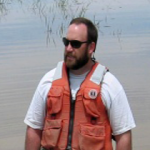Nathan Darnall

Is “adaptive resource management” the best tool for the job?
Adaptive resource management (ARM) is a structured, informed, iterative process of making decisions in the face of uncertainty. Not every decision will benefit from adaptive management; however, Adaptive Resource Management is appropriate for management decisions where management objective(s) can be stated explicitly, decisions are confounded by uncertainty, monitoring is used to inform decision making, and where management actions can be adjusted in response to what has been learned. One of the primary aims of ARM is to reduce uncertainty over time through continued learning (e.g., science and monitoring). Although science and monitoring play a key role in adaptive management, they are a means to an end, namely good management, and not an end in themselves.
By using ARM, management and regulatory agencies, landowners and stakeholders can make informed decisions that ultimately improve through time. A few examples of ARM include the management of water behind impoundments at Bear River Migratory Bird Refuge to optimize habitat for various guilds of birds, and the Utah Division of Wildlife Resources management of the brine shrimp harvest to maintain a sustainable harvest of cysts that provides economic benefit to the State and protects the ecological integrity of the lake ecosystem. Adaptive Resource Management is a tool that can potentially be used for many (but not all) decisions at the Great Salt Lake.

